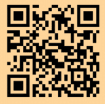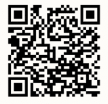Can we be amazed by the mundane?
Prep for the Session
At-a-Glance:
This resource guides learners to view natural phenomena and aspects of our everyday lives through the idea of Radical Amazement, as articulated by Rabbi Abraham Joshua Heschel. By viewing natural phenomena and everyday details through this lens, learners will have a chance to deepen their own experiences of wonder and amazement and consider why they may at times take experiences in the natural world for granted.Through the activities and prompts below learners will have the chance to experience Radical Amazement both during the session and in the days that follow.


- For older teens and young adults
- For exploration and experience of spirituality in the world around us
- For group experience and discussion

- Digital device to watch the video or screen to project it
- Printouts of the images or access to viewing them on a device (orprojected)
- An outdoor space for walking/watching
- Phones for participants to take photos (or paper and pencil for a non-digital version)
- Note: If you are outside and not able to watch or use a screen, then forgothe electronic parts
Let’s Get Started
FRAME THE ISSUE

Facilitator reads the following to give context:
We live in a world filled with details at every turn. What do we notice and what do we not? We often see what we are specifically looking for and miss other things that are right in front of us.Why does that happen? What is pulling at us in different ways?
Watching this video will ground our discussion.
| Scan the QR code or click here to watch the Monkey Business Illusion video together. |  |
After watching the video, facilitator asks the group:
- What struck you about the video?
- What surprised you?
If desired by the group, show the video again. Facilitator continues framing the issue:
As you saw in the video, it turns out that we miss and don’t notice what is around us, all the time. As we live in an awesome world, with natural wonders and modern marvels, why does that happen?

Facilitator prompts the group to consider the following questions:
- Can you think of an example of a natural feature in your daily life that you have taken for granted. What is it
- Why do you think you’ve taken it for granted?
- How might we be able to cultivate a sense wonder in our frenzied lives?
EXPLORE THE VALUE/ACTIVITY

Facilitator reads to introduce the value:
Wonder is a feeling of surprise and great admiration, often caused by something beautiful or unexpected. What moves us to a state of wonder can be surprising, even to ourselves.
It sometimes hits us when we least expect it, and at other times we need to look for it. The activity below gives us a chance to explore our own engagement with wonder in the different places we might find it around us.
STAGE 1:
Facilitator invites participants to break into groups of 2-3 people. Each small group is provided with either a pile of printed images, or a link to view the images below on their devices.
Scan the QR code of click here to view images.
| Note to facilitator: You can use these images, or choose any series of natural pictures, along with human made structures (ie,bridges, skyscrapers) as well as modern marvels (ie, a rocket ship taking off, etc.) |  |

Facilitator prompts the small groups to view the images and discuss (7 minutes):
Take a look at these pictures:
- Do any of them make you stop and say WOW? Do they inspire “wonder”?
- If so, what aspect of the picture elicits this response?
- What gets in the way of your regularly saying “wow”? Time? Distraction?
Facilitator brings participants back to the full group and asks them to share some of the images that caused them to say “Wow” and what elicited that feeling.
STAGE 2:
Facilitator leads the group on a “Wonder Walk.”
This can be done in a natural space or even in a hotel parking lot – as long as one can see the sky and smell the air. Each participant should have either a phone to take photos with, or for a non-digital alternative, give participants paper and pencils and have them jot down their wow moments.
Facilitator explains:
We are now going on a wonder walk. You must walk silently. As you walk, look around and up and down to see if you see anything that makes you stop and say“wow.” When you have a “wow” moment, capture it by taking a photo with your phone or writing it – visually or verbally.
After 5 minutes of walking, the facilitator brings the group back together (inside or outside) to share their “wow” moments. Facilitator prompts the group:
- Share one “wow” moment or phenomena you observed.
- Is there something you observed as a “wow” today that you have not before?If so, why did that happen?
ANCHOR IN JEWISH WISDOM

Facilitator introduces:
Rabbi Abraham Joshua Heschel (1907-1972) was a Jewish leader, thinker and writer who had a huge impact on modern Jewish philosophy. A key idea in Heschel’s writing is that as humans grow older, their sense of wonder declines. As an example, he notices that a baby stops hundreds of times a day to examine everything – her toes, a leaf, a bug, another’s face. Young children are filled with a sense of wonder that dissipates as we grow older. Heschel argues that humanity would be happier if we allowed wonder to play a more central part in our lives. We need to embrace the feelings of wonder, awe and amazement.
Facilitator asks participants to read the following quote from Heschel:
“Mankind will not perish for want of information; but only for want of appreciation. The beginning of our happiness lies in the understanding that life without wonder is not worth living. What we lack is not a will to believe buta will to wonder.” (God in Search of Man).

Facilitator prompts the group:
- Explain this quote in your own words.
- Do you agree with what is expressed here?
Facilitator continues:
Heschel adds another layer to wonder:
He says that when one stops and wonders, they often then say “wow.” At the moment where they say “wow” they are entering into a space called “radical amazement.” Some see radical amazement as a moment to experience God. Others see it as a moment to experience wonder for the sake of experiencing wonder.
Heschel encourages us, as Jews, to be open to experiencing Wonder and Radical Amazement throughout our days.
Facilitator prompts the group:
- Do you experience awe, wonder and radical amazement in your daily lives?
- If not, why do you think that is? What holds you back?
- How would our relationship with the physical world around us change if we intentionally created space for more wonder in our lives, and tried to find at least 10 moments each day where we stop and say “wow”?

Prompt action

Facilitator encourages participants to find a way to notice and experience more moments of wonder in their day to day lives:
To create a framework to use going forward, each participant is invited to keep a digital “Wow Journal” over the next week. Now is a chance to prepare for that.
Find a havruta/partner read and discuss the instructions below:
- For the next seven days, each time you see something that makes you stop and say wow take note of the feeling. Then take out your camera, and take a picture of whatever you noted, or sketch a picture of it. Note the time and place of where you noticed it.
- For a private “Wow Journal” – at the end of the week create a slideshow of your “wow” moments. If you choose, print some out and hang them around your room/desk/computer.
- For a shared “Wow Journal” experience, choose a partner now, and each day each of you will send at least one picture of a wow moment to your other.
Facilitator prompts the group:
- Together with your havtura/partner, each take a moment to write down some reactions to the above instructions:
- What is something that you think will be a challenge for you?
- What is something that you think will be easy for you?
- Discuss what you wrote.

Close with intention

In the exploration above we deepened our engagement with the value of wonder and had the opportunity to think about what we notice in the world,and what we don’t. Through the wonder walk activity paired with Heschel’s idea of “radical amazement” we had the chance to slow down, stop and think about the tension between what encourages us to notice the details of beauty and “wow” that are around us, and what might keep us back. It ended with an opportunity not just to think about cultivating wonder in this moment, but how we can integrate it in our lives moving forward, as we deepen our relationship with the world around us.
Facilitator prompts the group:
- Share a three-word summary (can be three separate words, or a phrase)with the group that describes a new perspective you are now leaving with.





 Back to Can we be amazed by the mundane?
Back to Can we be amazed by the mundane? 